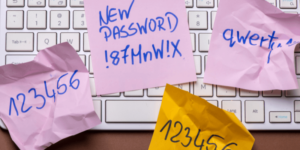In the rapidly evolving landscape of education, where digital technology has become integral to learning, the importance of network security cannot be overstated. This report sheds light on the compelling need to fortify educational institutions against cyber threats and explores the transformative impact of secure networking on the learning environment.
The Data Speaks: An Alarming Escalation of Threats:
According to the U.S. Department of Education, over 50 million students across the United States are enrolled in K–12 institutions. The education sector has not been immune to the relentless surge in cyber threats. While precise figures are hard to pin down, research from both federal and private sector sources highlights an alarming trend. Reported cyber incidents have surged from 400 in 2018 to an accumulated total of over 1,300 between 2018 and 2021. Cybercriminals are targeting school computer systems, disrupting operations, and causing significant disruptions.
A Multifaceted Challenge:
Educational institutions are treasure troves of sensitive data, encompassing student records, staff details, and educational materials. With the growing interconnectivity of systems, threat actors view schools as attractive targets. The implications are far-reaching, including data breaches, ransomware attacks, and website defacement. These threats not only compromise data but also disrupt the continuity of learning, resulting in monetary losses and learning disruptions ranging from days to weeks.
Key recommendations from the Cybersecurity & Infrastructure Security Agency to avoid network risks include:
- Implementing highest priority security controls.
- Aligning near-term investments with comprehensive cybersecurity performance goals.
- Developing a unique cybersecurity plan leveraging the NIST Cybersecurity Framework.
- Cultivating strong relationships with cybersecurity agencies to enhance preparedness.
A Real Case Scenario
The Atlanta Public School District’s proactive stance on network security, drawing insights from the aforementioned strategies, exemplifies the tangible gains of preparedness. Through collaboration with technology experts, the district overhauled its network infrastructure, enabling robust support for 75,000 users and ensuring secure, uninterrupted learning. This transformation encompassed a zero-trust approach to device verification, showcasing the potential dividends of investing in network security.
Conclusion:
In an era where education is no longer confined to physical classrooms, the digital realm presents opportunities and challenges alike. By investing in robust security measures and embracing collaborative efforts, educational institutions can create an environment that safeguards both learning and the sensitive data entrusted to them. The fusion of technology and education demands unwavering vigilance, making network security an indispensable cornerstone for fostering a secure and enriching educational experience.




